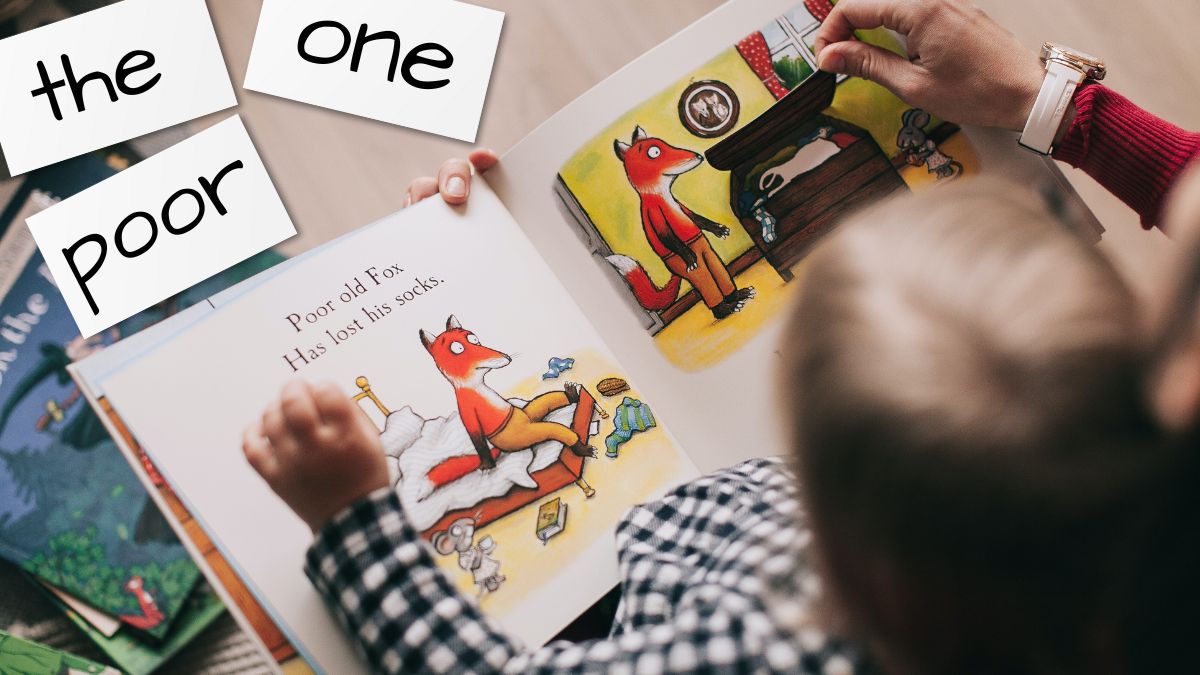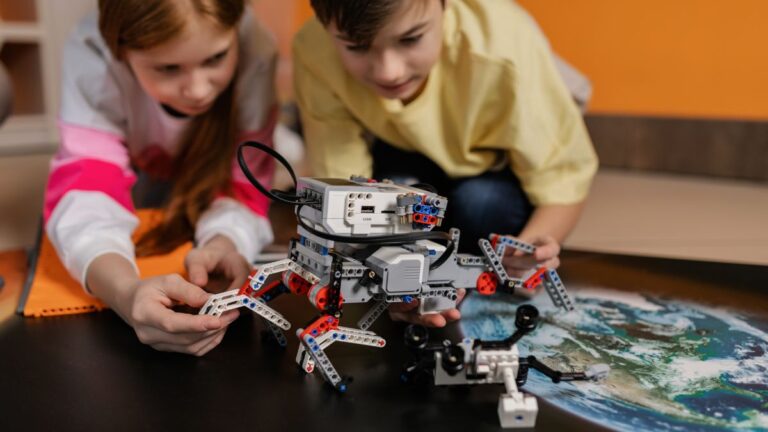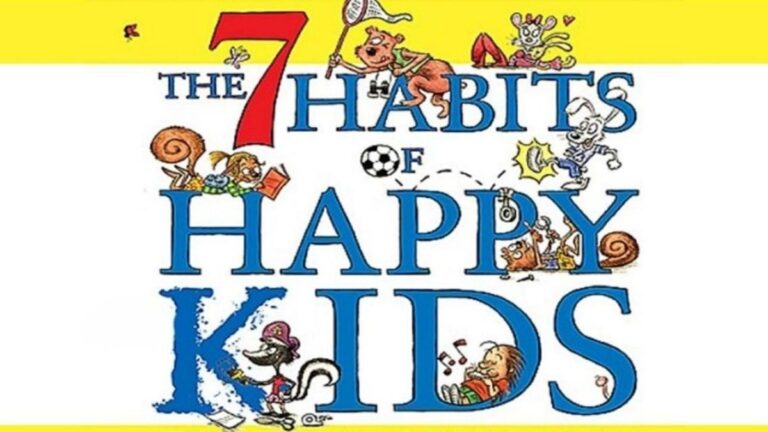How to Use Sight Words: Strategies for Mastering Common Words
Picture this: your little one eagerly flipping through the pages of a colorful storybook, eyes lighting up with each new adventure that unfolds. But wait, what are those magical words they seem to know by heart, effortlessly woven into the tale? Those, my friend, are sight words – the unsung heroes of early reading. They may not be the first step into reading, but they’re equally important. In this article, we’re about to embark on an exciting quest into the realm of sight words, and guess what? We’re not just unraveling their secrets, but we’re diving deep into how to use sight words to set the stage for reading success. Don’t be alarmed. Your child is still going to learn to blend and read words as they are. But some words are tricky and don’t sound out like they are written. They have to be pronounced a certain way and children can only know how to read them by remembering them with “sight”. So, grab a comfy seat, and let’s uncover the magic of sight words together, one word at a time!
Understanding Sight Words
Sight words, often called high-frequency words, are the VIPs of the reading world. These are the words that pop up everywhere, from storybooks to street signs. But here’s the secret sauce: they don’t play by the usual phonics rules. Nope, they’re like the rebels of the word world, defying pronunciation norms. Instead, they’re meant to be recognized on sight, like familiar faces in a crowd.
In other words, these are the rockstars your little reader needs to spot at first glance. Think of them as the tiny stepping stones that lead to fluency. When your child can instantly recognize words like “the,” “and,” “is,” and “you,” they’re well on their way to reading with speed and understanding. So, while sounding out words is like solving a puzzle, sight words are more like a cool secret handshake between your child and the book.
What Are Some Essential Sight Words?
Here is a compilation of commonly encountered sight words that form the foundation of early reading. This list is short and is designed to serve as a reference point for your child’s sight word journey and also to show you what sight words look like. They are basically words that cannot be pronounced with the help of blending the phonics.
- the
- and
- to
- he
- she
- we
- is
- it
- in
- you
- I
- a
- can
- see
- my
- like
- go
- on
- am
- at
For a more comprehensive list of over 100 sight words that can kickstart your child’s reading, here’s a free downloadable sight words list for you. Flashcards improve retention and are easier for children than long lists of words.
How to Use Sight Words: Strategies for Mastering Sight Words
Now, let’s explore strategies that transform sight word learning into an engaging and effective process.
Strategy 1: Repetition and Practice
Repetition forms the cornerstone of sight word mastery. Use the flashcards provided above or create your own flashcards featuring individual sight words and engage in daily practice sessions. Repetitive exposure to sight words reinforces memory and facilitates swift recognition. During these sessions, encourage your child to say the word aloud while pointing to it on the flashcard. As they progress, introduce variation by asking them to use the word in a sentence. Over time, this consistent practice engrains sight words into their reading repertoire.
Strategy 2: Visual Aids for Enhanced Recall
Visual aids play a pivotal role in aiding memory retention. Design colorful posters or charts showcasing sight words and their meanings. Display these visual aids in prominent locations within your child’s learning environment. Visual memory is a potent tool, and these aids transform the process of learning sight words into an interactive and visually appealing experience. Additionally, encourage your child to create their visual aids by drawing pictures that relate to each sight word. Associating visuals with words deepens understanding and recall.
Strategy 3: Contextual Reading for Application
Sight words become meaningful when incorporated into real-life contexts. Present sight words within sentences, stories, and short texts that your child can easily comprehend. This strategy bridges the gap between word recognition and comprehension. Ask your child to identify sight words within sentences and encourage them to read the entire sentence aloud. As they progress, introduce longer texts and narratives that feature a collection of sight words. This practice nurtures their ability to recognize sight words seamlessly while absorbing the essence of the text.
Strategy 4: Engaging Games and Activities
Learning through play is a fundamental principle, and it holds true for sight word acquisition. Transform sight word learning into an enjoyable experience by incorporating interactive games and activities. Classic games such as memory matching, bingo, and scavenger hunts can be adapted to focus on sight words. Create a bingo card featuring sight words, call out definitions or sentences, and let your child mark the words they recognize. Scavenger hunts encourage active exploration, as your child searches for objects that represent sight words around the house. The element of fun enhances motivation and reinforces sight word recognition.
Strategy 5: Building Words for Deeper Understanding
Breaking down sight words into smaller phonetic components can be incredibly effective, especially for children who thrive on understanding word structures. Guide your child to identify familiar sounds or letter combinations within sight words. For instance, in the word “can,” they can recognize the “c” and “a” sounds. Encourage them to explore other words that share these sounds, reinforcing phonetic patterns. This approach not only promotes sight word recognition but also contributes to phonemic awareness—a crucial skill for proficient reading.
Strategy 6: Rhyming Practice for Phonemic Connections
Rhyming is a valuable technique for enhancing phonemic awareness and sight word recognition. Identify rhyming words that share similar patterns with sight words. For instance, pair “see” with “me” or “like” with “bike.” Engage your child in a rhyming game where they need to find rhyming words for different sight words. This strategy not only reinforces sight words but also fosters an understanding of word families and phonetic relationships.
Strategy 7: Embrace Interactive Technology
In today’s digital age, technology can be harnessed to support reading as well as sight word learning. Explore educational apps and online resources specifically designed for sight word acquisition. These platforms offer engaging games, quizzes, and interactive exercises that cater to various learning styles. These tools provide a dynamic and independent approach to learning sight words, complementing traditional methods.
Strategy 8: Craft Personalized Sentences
To foster a deeper connection between sight words and meaning, encourage your child to create personalized sentences using sight words. Provide them with a collection of sight words and let them craft sentences that reflect their experiences, interests, or imagination. This personalized approach not only enhances comprehension but also encourages your child to actively engage with sight words in a meaningful context.
Wrapping Up: A Bright Reading Future with Sight Words
Empowering your child with a strong foundation in sight words sets the stage for confident and fluent reading. By knowing how to use sight words and implementing these multifaceted strategies and infusing sight word learning with creativity and engagement, you’re equipping your child with the tools they need to excel in their reading journey. Keep in mind that each child learns at their own pace, so be patient and celebrate their milestones along the way. With dedication, enthusiasm, and a holistic approach to sight word mastery, you’re nurturing a lifelong love for reading and language—an invaluable gift that will accompany them on their educational voyage.
- How to Raise Awesome Parents: A Guide by the World’s Coolest 5-Year-Old - December 22, 2023
- How to Use Sight Words: Strategies for Mastering Common Words - August 4, 2023
- Understanding Dyslexia: Nurturing the Unique Reading Journey of Dyslexic Readers - July 31, 2023







